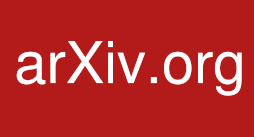Document detail
ID
oai:arXiv.org:2403.18777
Topic
Computer Science - Data Structures...Author
Blais, Eric Seth, CameronCategory
Computer Science
Year
2024
listing date
4/3/2024
Keywords
container bound tester graph complexityAbstract
The graph and hypergraph container methods are powerful tools with a wide range of applications across combinatorics.
Recently, Blais and Seth (FOCS 2023) showed that the graph container method is particularly well-suited for the analysis of the natural canonical tester for two fundamental graph properties: having a large independent set and $k$-colorability.
In this work, we show that the connection between the container method and property testing extends further along two different directions.
First, we show that the container method can be used to analyze the canonical tester for many other properties of graphs and hypergraphs.
We introduce a new hypergraph container lemma and use it to give an upper bound of $\widetilde{O}(kq^3/\epsilon)$ on the sample complexity of $\epsilon$-testing satisfiability, where $q$ is the number of variables per constraint and $k$ is the size of the alphabet.
This is the first upper bound for the problem that is polynomial in all of $k$, $q$ and $1/\epsilon$.
As a corollary, we get new upper bounds on the sample complexity of the canonical testers for hypergraph colorability and for every semi-homogeneous graph partition property.
Second, we show that the container method can also be used to study the query complexity of (non-canonical) graph property testers.
This result is obtained by introducing a new container lemma for the class of all independent set stars, a strict superset of the class of all independent sets.
We use this container lemma to give a new upper bound of $\widetilde{O}(\rho^5/\epsilon^{7/2})$ on the query complexity of $\epsilon$-testing the $\rho$-independent set property.
This establishes for the first time the non-optimality of the canonical tester for a non-homogeneous graph partition property.
;Comment: To appear at STOC 2024
Blais, Eric,Seth, Cameron, 2024, New Graph and Hypergraph Container Lemmas with Applications in Property Testing

TurkishMMLU: Measuring Massive Multitask Language Understanding in Turkish
evaluate provide turkishmmlu questions language
The Measurement of Acculturation in Neuropsychological Evaluations of Hispanic/Latino Individuals across the Lifespan: A Scoping Review of the Literature
evidence review lifespan various validation acculturation measures

